
LAV-25 at the Marine Corps Air Ground Combat Center.

These two LAV-25s have their turrets trained to their rears. The turret machine guns on the commander's hatches are visible on both vehicles, as are the large double rear doors to their passenger compartments. Each of the rear doors has a vision block installed, and there are also vision blocks in the passenger compartment between the water cans. The left-hand rear roof hatch is open on the left vehicle. The engine exhaust with the large muffler is routed along the right side of the hull, and the propellers and rudders for water operation can be seen above and behind the rear wheels. Two four-round smoke grenade launchers are mounted on each vehicle's turret. These vehicles were with Alpha Company, 2nd Light Armored Reconnaissance Battalion during Combined Arms Exercise 5-97. (Picture taken 19 Apr 1997; available from the National Archives.)

A marine is sitting on the open rear roof hatch on this vehicle. The emergency hatch is visible on the upper hull side between the front and rear axle sets. The driver and turret crew were provided with ATGM wire cutters to prevent injury from wires strewn across the battlefield. They are both folded down on this vehicle, on the front hull in front of the driver's hatch and on the turret front above the 25mm gun. The head assembly for the thermal sight is on the turret's left side, in front of the gunner's position. Periscope gun sights are in front of the commander on the turret's right side. The self-recovery winch fair lead can be seen on the prow of the hull; the winch itself was located under a hatch just behind the fair lead. A large trim vane for water operations was stowed on the lower part of the front hull. This vehicle was part of Delta Company, 1st Light Armored Reconnaissance Battalion, and was taking part in Exercise Kernel Blitz '99. (Picture taken 24 Apr 1999; available from the National Archives.)
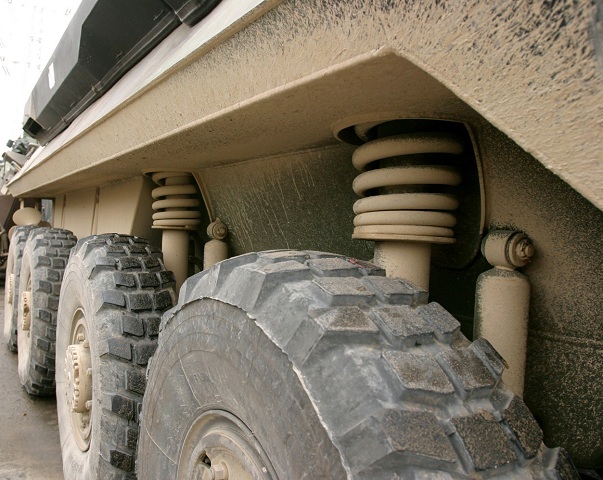
Details of the suspension are shown in this image. Each wheel was provided with a shock absorber, and the springs on the front wheels are visible from the outside. One of the rear propellers can be seen as well, and the large engine muffler resides on the right side of the vehicle. This vehicle is waiting in line at a wash station before coming back to Okinawa from the Amphibious Ready Group Exercises 2004. (Picture taken 21 Mar 2004; available from the National Archives.)
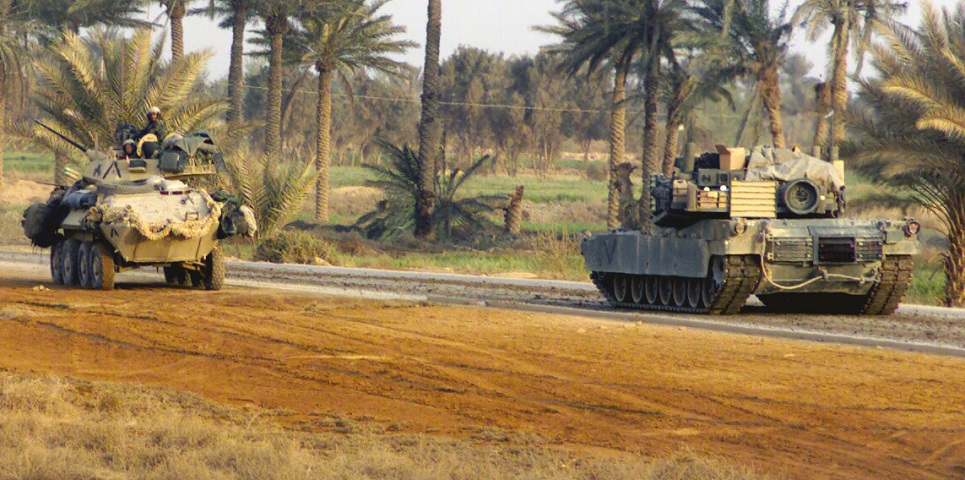
This image provides a size comparison between the LAV-25 and an M1A1 tank from Charlie Company, 1st Tank Battalion, during Operation Iraqi Freedom. (Picture taken 31 Mar 2003 by SGT Paul L. Anstine, II; available from the National Archives.)
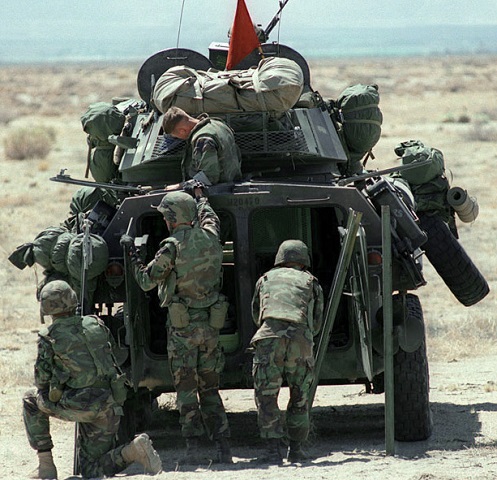
The open rear doors and roof hatches can be seen on this vehicle, from which minefield guide stakes are being unloaded. The thickness of the rear doors and roof can be noted. (Picture taken 5 Aug 1997 by Pvt Jay M. Dostal; available from the National Archives.)
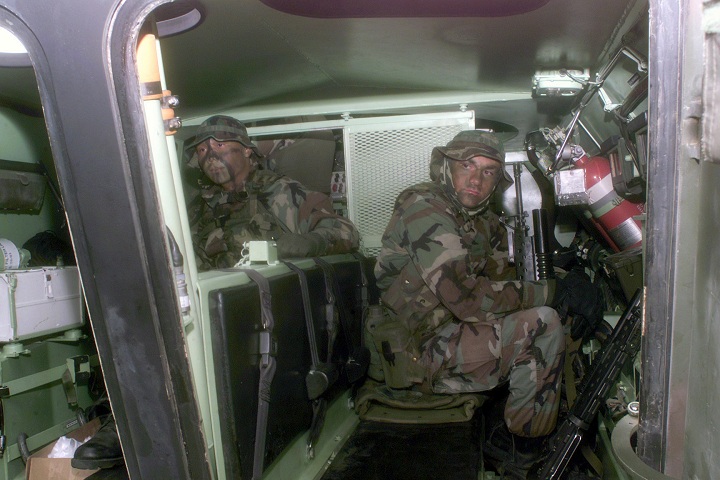
The interior of the passenger compartment is illustrated in this image. Six troops could be accommodated sitting back-to-back on the two bench seats. Red fixed fire extinguishers can be seen towards the front on the right, and the vertical fuel filler pipe is partially hidden by the center armor between the open doors. The roof hatches can just be seen, and daylight is coming through the open left-hand hatch. This vehicle was part of Charlie Company, 3rd Light Armored Reconnaissance Battalion, and was taking part in Exercise Kernel Blitz 2001. The marines pictured are HM Dan Ocampo on the left and LCPL Burns on the right. Behind them, CPL Michael Probst sits in the vehicle's gunner's seat. (Picture taken 26 Mar 2001 by LCPL Brent T. Harvey; available from the National Archives.)
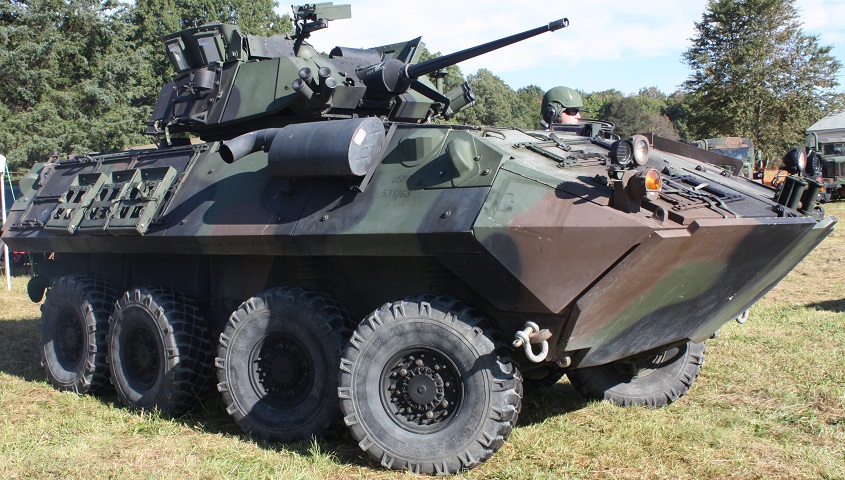
Visual differences of the LAV-25A2 compared to the vehicles above include the visibly thicker armor, larger tires, different exhaust muffler and outlet, and transparent armor for the turret crew. (Photo by Richard S. Eshleman.)

Details of the front suspension can be seen here, including the position of the spring, shock absorber, control arm, and brake line.

The rear torsion bar suspension is highlighted in this image.

Additional armor can be seen around the towing lug and headlight cluster. The self-recovery winch fairlead is on the opposite side of the bow in front of the left headlight cluster.
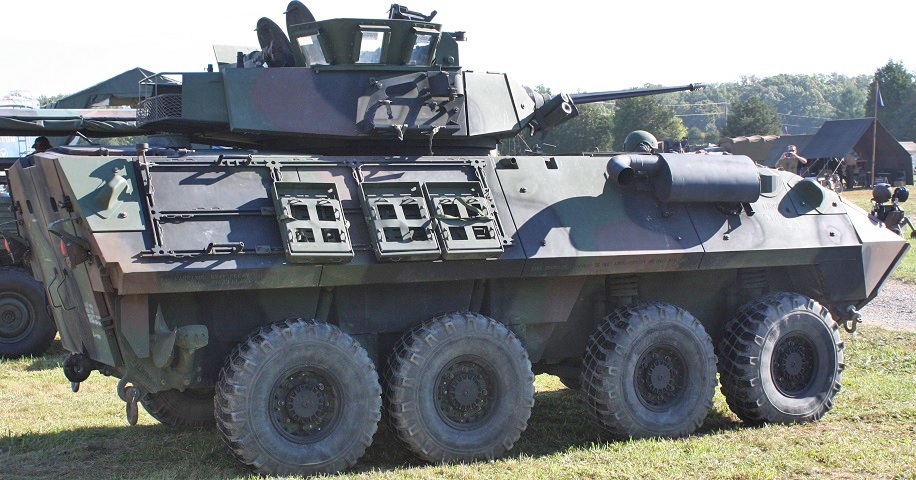
The thicker armor plates overlap the turret stowage basket, and the vision blocks in the hull side were covered. Stowage racks are mounted on the hull rear sides. (Photo by Richard S. Eshleman.)

This image provides a closer view of the turret side and transparent turret armor.

The applique armor had to leave apertures for necessities like the bilge pump outlet, for example.
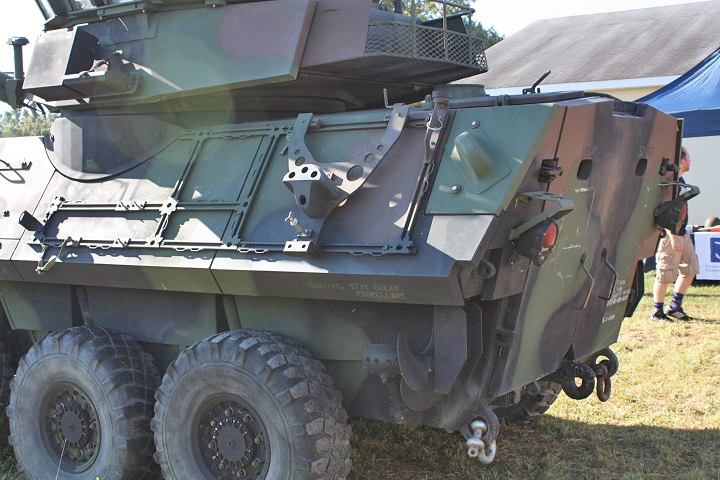
The vision blocks in the rear doors are noticeably inset with the additional armor, and protection for the turret ring has been mounted on the hull side. A bracket for mounting a spare wheel can be seen on the rearmost stowage rack. (Photo by Richard S. Eshleman.)
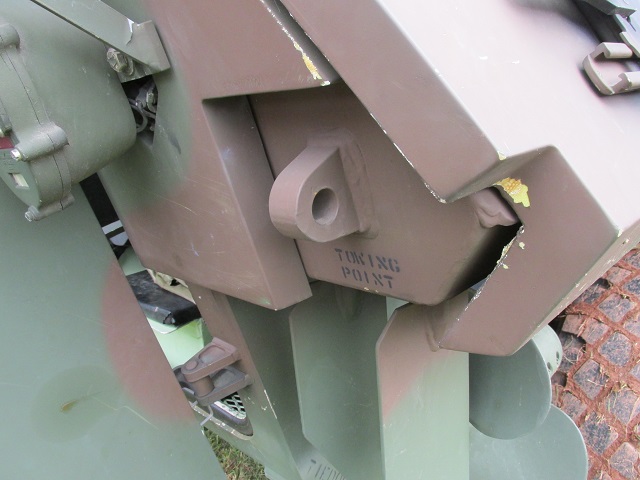
The rear towing lugs had cutouts in the applique armor as well. The rear light and its brush guard can be seen to the upper left.
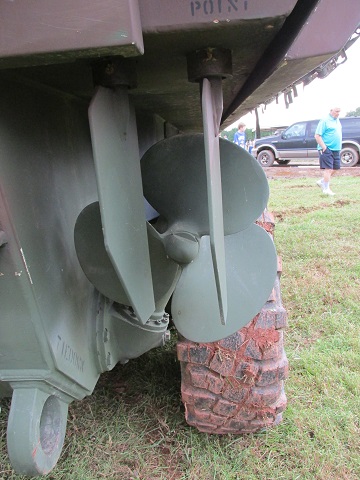
Two rudders were behind each propeller to steer the vehicle while afloat. A tie-down lug is welded to the hull below the propeller.
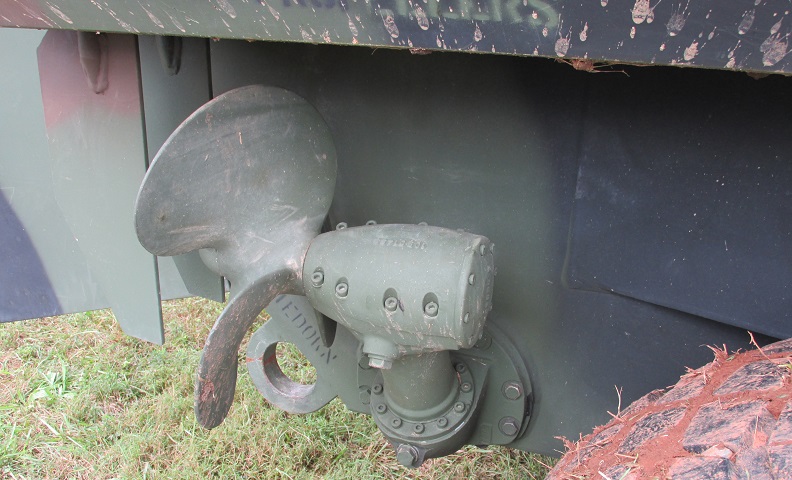
Further details of the propeller assembly are shown here.

The rear doors are open on this machine. Vision blocks are installed in each of the doors, and brackets for tool stowage were provided on the right door. A towing pintle is centered below the doors, safety chain lugs flank the towing pintle, and a round intervehicle receptacle is under the left door.
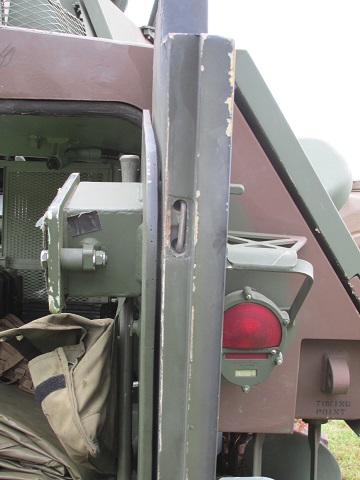
An end-on view of the right door with its vision block is highlighted here.
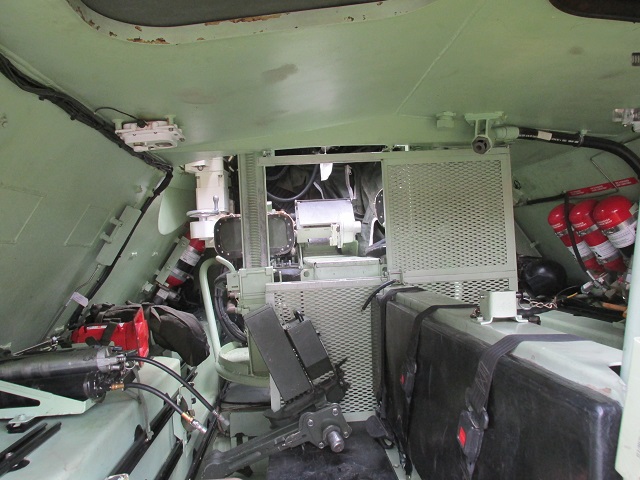
A view into another troop compartment is provided by this image. The turret floor can be seen ahead; the gunner's seat to the left is lower than the commander's on the right.
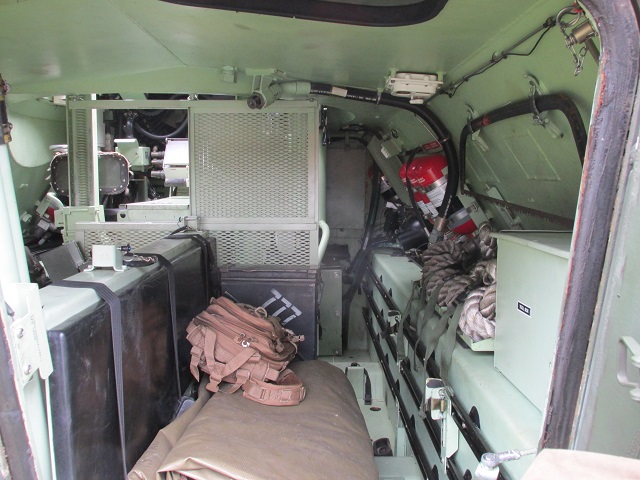
The opposite side of the troop compartment is shown here. The gunner's control can be seen in front of his seat.

The thickness of the additional armor plating on the hull and turret can be gleaned from this image. The different turret sights can also be seen: contrasting to earlier vehicles, the gunner's now has a smooth, rounded cover plate while the commander's has a bolted, rectangular plate. (Photo by Richard S. Eshleman.)